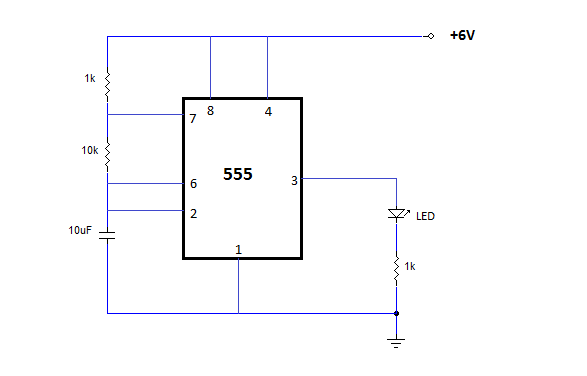
simple led automatic daynight lamp

The power supply utilized in this circuit is of the capacitive type, eliminating the need for a transformer and allowing for a compact design that can be easily installed in small spaces. The circuit employs LEDs instead of traditional filament bulbs, resulting in a power-efficient and economical application. The proposed circuit diagram for the automatic day-night lamp switch features a red LED, although white LEDs would be more effective for illumination. A 10-ohm resistor is included to mitigate the initial voltage surge, protecting subsequent stages of the circuit from potential damage. Additionally, a metal-oxide varistor (MOV) is positioned after the 10-ohm resistor to enhance the unit's protection by grounding any surges that may occur. The first transistor functions as a comparator, assessing the voltage across a variable resistor. It activates when the voltage reaches saturation levels, which occurs when the light intensity on the light-dependent resistor (LDR) decreases. When the LDR's resistance drops below a predetermined threshold due to increased ambient light, the transistor turns on.
The circuit design features a capacitive power supply that operates without a transformer, making it suitable for compact installations in various environments. The use of LEDs significantly enhances energy efficiency compared to traditional lighting solutions, with the option to use white LEDs for improved illumination effectiveness. The inclusion of a 10-ohm resistor serves a critical role in managing voltage transients; this resistor limits the inrush current, thereby safeguarding sensitive components downstream from potential overvoltage conditions.
The MOV acts as a protective element, functioning to absorb voltage spikes and divert excess energy to ground, thus preventing damage to the circuit during transient events. This combination of the 10-ohm resistor and the MOV ensures robust protection against electrical surges, contributing to the longevity and reliability of the device.
The operational mechanism of the circuit hinges on the light-dependent resistor (LDR), which adjusts its resistance based on ambient light levels. When light intensity decreases, the resistance of the LDR diminishes, leading to an increase in voltage across the variable resistor connected to the comparator transistor. Once this voltage reaches a critical saturation point, the transistor activates, allowing current to flow and turning on the LED. This automatic switching mechanism provides convenience and energy savings, as the lamp only operates when needed, responding dynamically to changes in environmental lighting conditions.
Overall, this circuit exemplifies an efficient, compact design that leverages modern components to achieve effective automatic lighting control.The power supply used here is a capacitive type, thus no transformer is incorporated making the circuit very compact and fixable in any small corner of the particular premise. The use of LEDs in place of a filament bulb makes the application very powereconomicand efficient. The proposed LED automatic day night lamp switch circuit diagram shows red LED being used, however white LEDs would suit the application better, as that would help illuminate the area better than the red LEDs. The 10 Ohms resistor helps to cancel out the initial surge or the voltage rush that might otherwise be potentially harmful to the further stages of the circuit.
The MOV or the varistor placed after the 10 Ohm resistor emhances the protection feature of the unit and grounds all surges that might sneak in after the 10 Ohm resistor. The first transistor is wired up as a comparator, which compares the potential difference across the variable resistor andconductswhen the voltage across it rises to saturation levels.
Theabove rise in the voltage level takes place when the relevant magnitude of light falls on the LDRsurface. Once the resistance of the LDR falls below the set threshold due to higher ambient light, the transistor conducts.
🔗 External reference
The circuit design features a capacitive power supply that operates without a transformer, making it suitable for compact installations in various environments. The use of LEDs significantly enhances energy efficiency compared to traditional lighting solutions, with the option to use white LEDs for improved illumination effectiveness. The inclusion of a 10-ohm resistor serves a critical role in managing voltage transients; this resistor limits the inrush current, thereby safeguarding sensitive components downstream from potential overvoltage conditions.
The MOV acts as a protective element, functioning to absorb voltage spikes and divert excess energy to ground, thus preventing damage to the circuit during transient events. This combination of the 10-ohm resistor and the MOV ensures robust protection against electrical surges, contributing to the longevity and reliability of the device.
The operational mechanism of the circuit hinges on the light-dependent resistor (LDR), which adjusts its resistance based on ambient light levels. When light intensity decreases, the resistance of the LDR diminishes, leading to an increase in voltage across the variable resistor connected to the comparator transistor. Once this voltage reaches a critical saturation point, the transistor activates, allowing current to flow and turning on the LED. This automatic switching mechanism provides convenience and energy savings, as the lamp only operates when needed, responding dynamically to changes in environmental lighting conditions.
Overall, this circuit exemplifies an efficient, compact design that leverages modern components to achieve effective automatic lighting control.The power supply used here is a capacitive type, thus no transformer is incorporated making the circuit very compact and fixable in any small corner of the particular premise. The use of LEDs in place of a filament bulb makes the application very powereconomicand efficient. The proposed LED automatic day night lamp switch circuit diagram shows red LED being used, however white LEDs would suit the application better, as that would help illuminate the area better than the red LEDs. The 10 Ohms resistor helps to cancel out the initial surge or the voltage rush that might otherwise be potentially harmful to the further stages of the circuit.
The MOV or the varistor placed after the 10 Ohm resistor emhances the protection feature of the unit and grounds all surges that might sneak in after the 10 Ohm resistor. The first transistor is wired up as a comparator, which compares the potential difference across the variable resistor andconductswhen the voltage across it rises to saturation levels.
Theabove rise in the voltage level takes place when the relevant magnitude of light falls on the LDRsurface. Once the resistance of the LDR falls below the set threshold due to higher ambient light, the transistor conducts.
🔗 External reference





